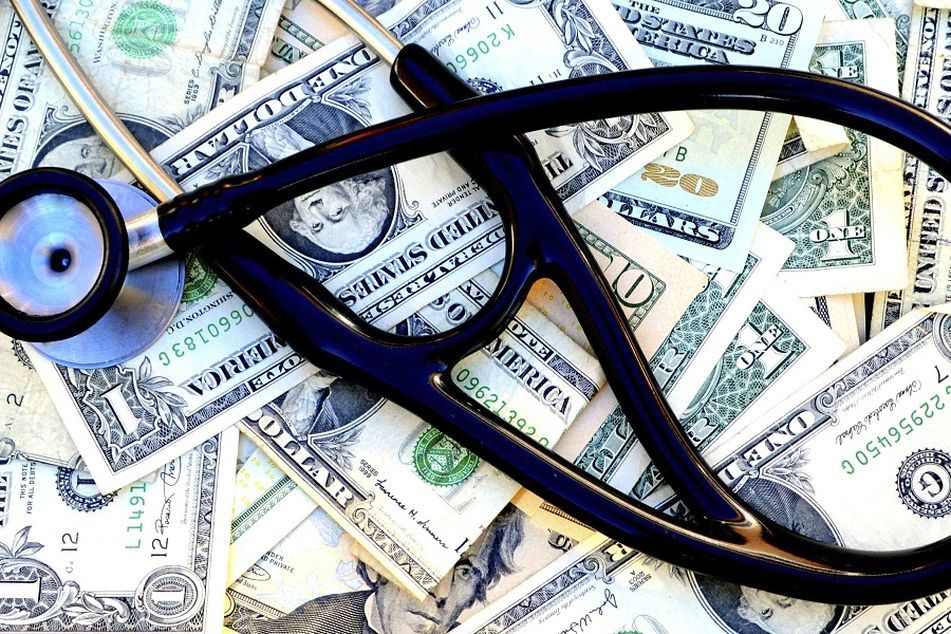Latest Obamacare ruling could spark a sell-off in health care sector stocks

Sudden volatility could create short-term buying opportunity.
If you haven’t yet hitched a ride on the high-flying health care sector rally, there’s still hope in the form of a potential pullback from an upcoming Supreme Court ruling that could trigger some near-term volatility.
Even some staunch health care sector bulls who have already enjoyed the category’s 118% run over the past four years are talking about taking profits with the anticipation of buying back in after a high court ruling on King v. Burwell.
The sector’s performance over the past four years compares to a 63% gain over the same period for the S&P 1500 Index.
“We’re not putting ourselves out as constitutional law experts, but we are saying there’s probably a 40% chance the ruling favors the plaintiff and that will be bad news for a lot of healthcare stocks,” said John Canally, chief economic strategist at LPL Financial.
Mr. Canally is among the majority in anticipating that the Supreme Court will rule on or before June 29 whether individuals participating in the Affordable Care Act through federal exchanges are eligible for subsidies that were designed for those signing up on state-level exchanges.
That particular detail is no small matter, according to Jeff Loo, health care sector equity analyst at S&P Capital IQ.
“Within the voluminous health care reform law, there’s one sentence that states tax credits are available to people who obtain health insurance through an exchange established by a state,” he said.
Trouble is, only 16 states have established health care exchanges, but there are 34 other states that let the federal government establish exchanges. The argument currently before the court is that, as the law is written, subsidies are not allowed for individuals that signed up on federal exchanges.
“The Obama administration said it was always the intent of the law to provide subsidies to any residents regardless of where they live, but plaintiffs are taking the words of the law literally,” Mr. Loo said. “The IRS has already ruled that the tax subsidies are legal, but the plaintiffs are saying the IRS made an incorrect ruling.”
To understand how a ruling favorable to the plaintiffs could spark selling of health care sector stocks, just consider that 87% of the people getting insurance through the exchanges are getting a tax subsidy, and among that 87%, the subsidies on average are covering 79% of premium payments.
“The numbers are staggering,” Mr. Loo said. “If the subsidies go away one would imagine the bulk of these people will no longer be purchasing insurance, which will have some kind of adverse effect on the health care sector.”
While analysts like Mr. Loo and others see a ruling that shuts down the subsidy to the roughly 8 million people who are getting insurance through the federal exchanges as rippling across the health care industry in the form of reduced revenue, some advisers believe there are other safety nets in place that will mute the volatility.
“I think it’s a very narrow case,” said Hank Mulvihill, principal at Mulvihill Asset Management.
“Worst case scenario, 8 million people lose their subsidy, but if the premium payments add up to a certain percentage of their income they will get coverage anyway,” he said. “I’ve been watching this for any kind of a fear trade and I haven’t seen it, but I am getting lots of calls from clients who are suddenly concerned about hedging the risk of a pullback.”
Mr. Mulvihill added that his clients are already overweight health care sector stocks, and that he will continue to buy based largely on demographic realities.
“As far as the fundamental demand for health care services, we are going from 15% of the U.S. population over age 65 to more than 20% in the next five years,” he said. “This is an unprecedented surge in the population cohort which most rapidly increases consumption of health care services.”
Theodore Feight, owner of Creative Financial Design, is also not fretting or planning any major adjustments to his current health care sector allocations.
“Obamacare should not affect our investments much,” he said. “If Obamacare stands, the prices will continue to go up because the government allows way too much overpricing, and the health care sector won’t pull back until at least half the baby boomers are all dead.”
Mr. Feight’s clients are currently gaining the bulk of their health care sector exposure through the Vanguard Health Care ETF (VHT) and SPDR S&P Pharmaceuticals ETF (XPH).
To be clear, any pullback in health care sector stocks resulting from a Supreme Court ruling that reduces federal subsidies is expected to be temporary, which means financial advisers would have to be nimble and ready to react.
“We think if the Supreme Court rules against the tax subsidies that a short-term fix will be put into place by Congress to reduce the impact, ahead of the 2016 presidential election,” said Todd Rosenbluth, director of mutual fund and ETF research at S&P Capital IQ.
“We also think hospital stocks, which have been among the best performers, are most vulnerable to a pullback,” he added.
The health care sector mutual fund category, as tracked by Morningstar Inc., hasn’t seen a negative year since its 23.4% decline in 2008.
This year, through Thursday, the category is up 15.7%, which follows a 27.3% gain last year, 48.2% in 2013 and 21.6% in 2012.
The S&P 500 Index is up 3.4% this year, gained 13.7% last year, 32.4% in 2013 and 16% in 2012.
Learn more about reprints and licensing for this article.








